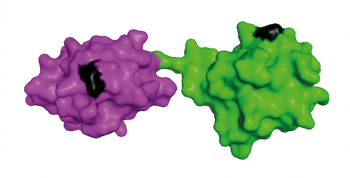20 Mar 2017 - Tracing down linear ubiquitination.
Ubiquitin molecules can be attached to each other to build longer chains with unique 3D structures mediating diverse functions. About a decade ago, linear ubiquitin chains, in which the head of one ubiquitin is linked to the tail of another, were identified as a new chain type involved in inflammatory signalling.
However, target proteins of linear ubiquitination and their specific functions have largely remained elusive. A novel technology developed by an international team around IBC2 group leader Koraljka Husnjak now enables the systematic analysis of linear ubiquitination targets. Details are published in today’s online issue of Nature Methods.
Together with partners from the University of Tübingen, Queen Mary University and Francis Crick Institute (both London, UK), the Frankfurt scientists modified the ubiquitin molecule in such a way that it maintains its cellular functions whilst at the same time enabling the enrichment and further analysis of its targets by mass spectrometry. With this technology at hand, it is now possible to identify proteins modified by linear ubiquitin. This highly sensitive approach is an important breakthrough that will strongly improve our understanding of the functions of linear ubiquitination and its role in diseases.
